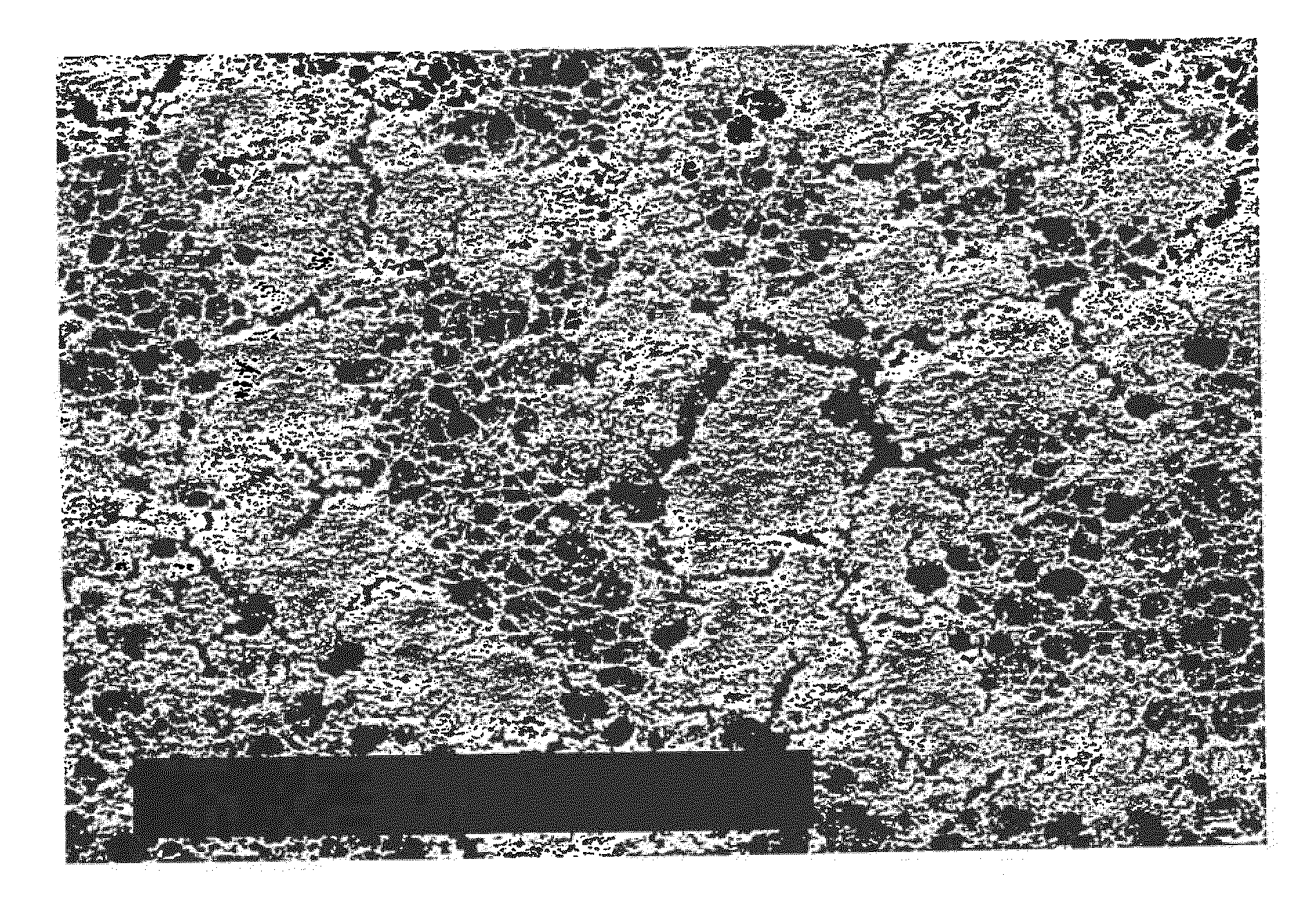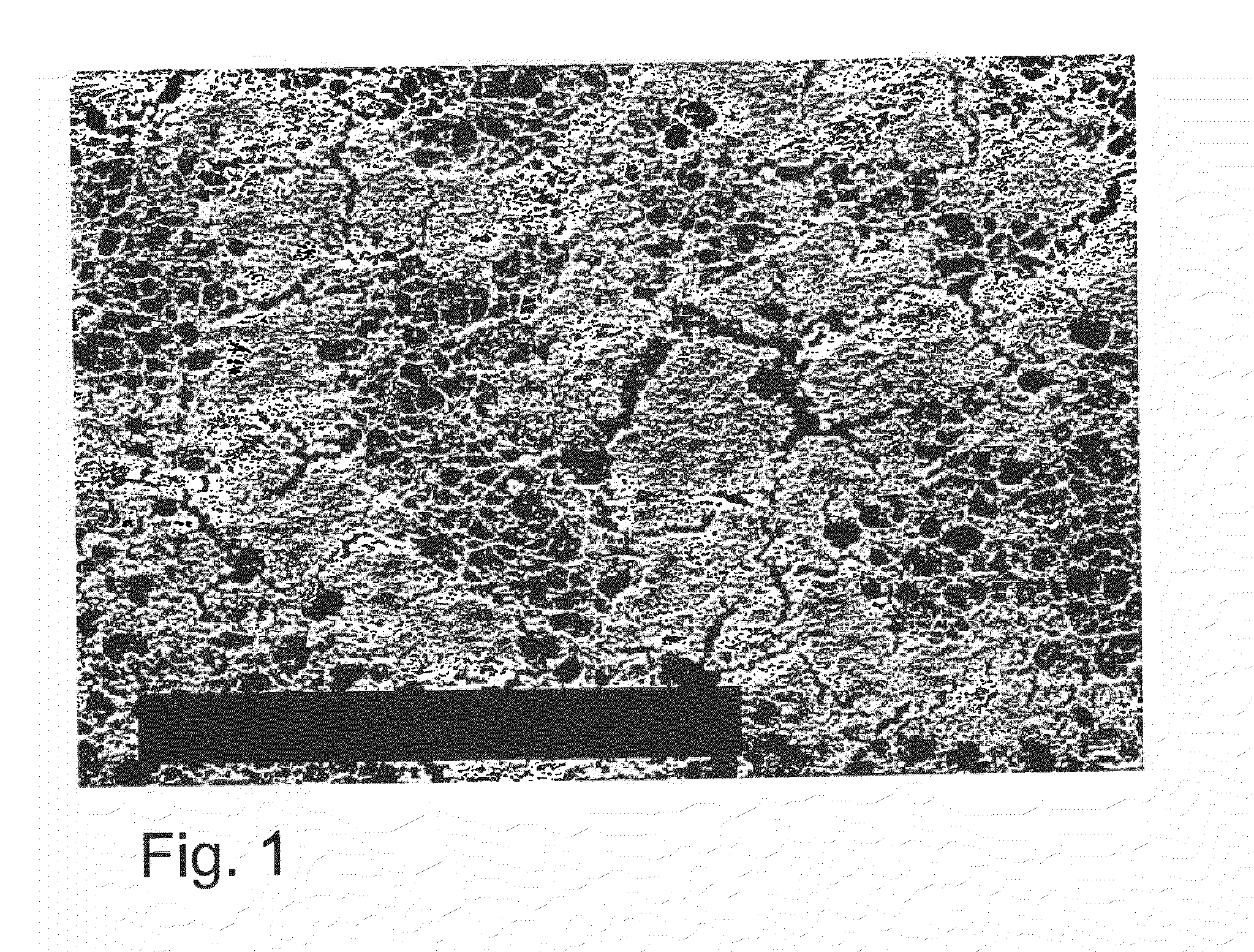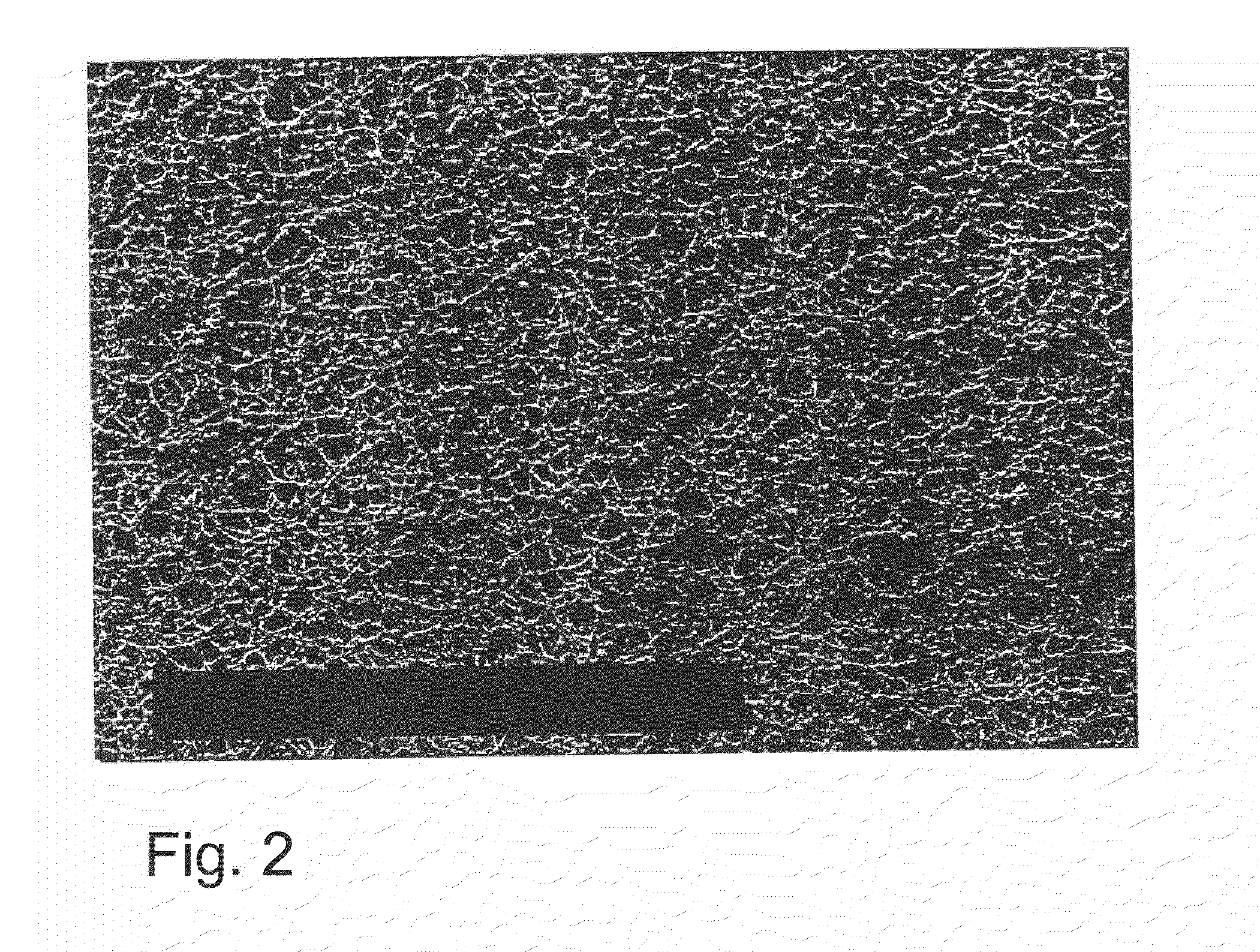Process for Producing Surface Enhanced Membrane
a surface enhanced membrane and processing technology, applied in the field of membranes, can solve the problems of affecting the intensity of the resulting colour signal, affecting the appearance of filter dust in such an arrangement, and posing a major problem
- Summary
- Abstract
- Description
- Claims
- Application Information
AI Technical Summary
Benefits of technology
Problems solved by technology
Method used
Image
Examples
manufacturing example 1
[0057]A prior art membrane casting solution comprising a polymer blend of commercially available cellulose nitrate and cellulose acetate is, in a membrane drawing machine, applied to a carrier film comprising polyethylene terephthalate having a layer thickness of 100 μm. The now-coated film is, during its transit through the drawing machine up to the exit thereof, subjected to evaporation for the purpose of removing the greater part of the components of the solvent mixture, whereby the carrier-supported membrane results from phase inversion. The membrane, having being dried in the end dryer (three-roller frame) exhibits both pores approx. 10 μm wide and filter dust deposits on its upper side (FIG. 1).
operation example 1
[0058]The membrane resulting from aforementioned Manufacturing Example 1, is transferred, when still damp, from the exit of the membrane drawing machine into the proposed membrane cleansing device that is schematically represented in FIG. 3. Water is used as rinsing liquid. Employed as the mechanical wiper is a roller shaped brush, whose circumference speed corresponds to approx. 10 times the speed at which the membrane is drawn. The membrane is impregnated in the second rinsing device with a 0.01 to 1.5% solution of an anionic wetting agent. The membrane is next dried as described in Manufacturing Example 1. The resulting membrane, which has pores approx. 10 μm wide, is, however, free of filter dust and other impurities (FIG. 2) and exhibits, when tested with a test fluid, (a solution of phenol red) a migration time of on average 90 sec. / 40 mm with an unbroken, straight front of advance and produces, when applied, a precise, intensely-coloured test line. The migration speed was mea...
PUM
| Property | Measurement | Unit |
|---|---|---|
| pore widths | aaaaa | aaaaa |
| pore widths | aaaaa | aaaaa |
| pore width | aaaaa | aaaaa |
Abstract
Description
Claims
Application Information
 Login to View More
Login to View More - R&D
- Intellectual Property
- Life Sciences
- Materials
- Tech Scout
- Unparalleled Data Quality
- Higher Quality Content
- 60% Fewer Hallucinations
Browse by: Latest US Patents, China's latest patents, Technical Efficacy Thesaurus, Application Domain, Technology Topic, Popular Technical Reports.
© 2025 PatSnap. All rights reserved.Legal|Privacy policy|Modern Slavery Act Transparency Statement|Sitemap|About US| Contact US: help@patsnap.com



